Discover the fascinating world of Growing Microgreens and learn about the Best Microgreens To Grow in your own home.

Growing microgreens in your garden bed outside or in containers are perfect for gardeners with little space. You can grow microgreens at home on a windowsill or a balcony, or other open space! All you need is a bit of space and grow mats for microgreens.
What are Microgreens?
Microgreens are miniature versions of leafy vegetables and herbs that are harvested at an early stage of growth. These tiny greens are packed with concentrated nutrients and possess a vibrant array of flavors, making them a popular choice for health-conscious food enthusiasts. Why grow microgreens at home?
Microgreens are known for their remarkable nutritional profile, often containing higher levels of vitamins, minerals, and antioxidants compared to their fully-grown counterparts. They offer a burst of fresh flavors, ranging from spicy and tangy to mild and earthy, adding a delightful twist to salads, sandwiches, soups, and various culinary creations. These miniature greens are relatively easy to grow indoors, making them an ideal choice for urban gardeners or anyone with limited space.
Don’t know How to Grow Microgreens Without Soil? Learn here.
Pot Requirement for Microgreens
Want to know how to grow microgreens at home? When it comes to growing microgreens, the choice of pots or containers is flexible and largely depends on personal preference and available resources. The most common options include shallow trays, seedling trays, plastic containers, or even recycled materials like old baking trays or takeout containers.
The ideal pot size for microgreens is typically around 1-2 inches deep. This shallow depth allows the microgreens’ shallow root systems to spread out and develop without being overwhelmed by excessive soil. Additionally, it is crucial to ensure that the chosen pot has proper drainage holes to prevent waterlogging, as excess moisture can lead to root rot or the growth of mold.
How to Grow Microgreens Tip: Choosing growing trays for microgreens? The key factor to consider is that the chosen container should be shallow to accommodate the shallow root systems of growing microgreens. Select shallow trays with good drainages, such as seedling trays or repurposed containers, for growing microgreens effectively.
Here are Plant Pot Sizes from Inches to Gallon
Best Microgreens to Grow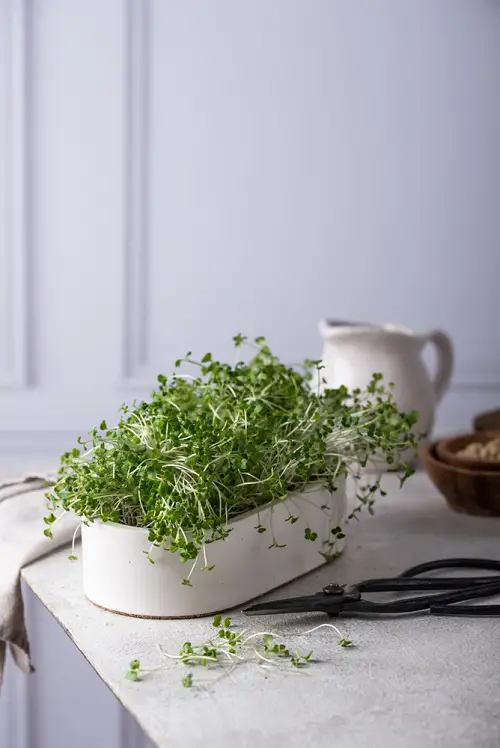
Leafy greens, herbs, edible flowers, and vegetables, there are so many options to try. But the best microgreens are those with intense flavor.
Best Microgreen Herbs
1. Parsley
Botanical Name: Petroselinum crispum
Fresh and vibrant Parsley microgreens offer a mild, herbaceous flavor with hints of sweetness, making them a delightful addition to salads, soups, and garnishes.
2. Cilantro (Coriander)
Botanical Name: Coriandrum sativum
Cilantro microgreens are some of the best microgreens to grow and add a zesty kick to dishes with their unique flavor.
3. Dill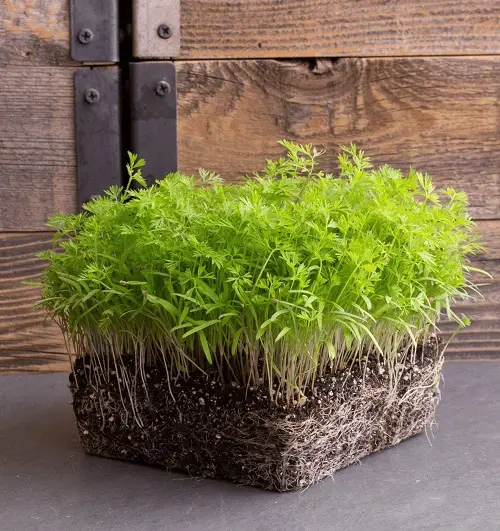
Botanical Name: Anethum graveolens
Delicate and aromatic, Dill microgreens bring a refreshing taste reminiscent of the herb’s mature form. These tiny greens add a burst of flavor to seafood, salads, and dressings.
4. Basil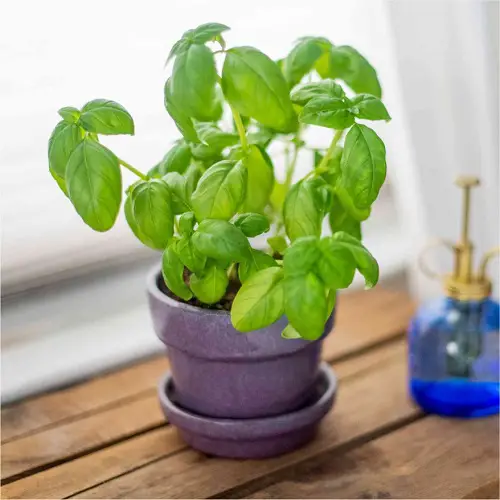
Botanical Name: Ocimum basilicum
With its distinct aroma and sweet flavor, Basil microgreens lend a touch of freshness to any dish.
5. Chives
Botanical Name: Allium schoenoprasum
Chive microgreens offer a mild onion-like taste and a subtle hint of garlic and are excellent for adding a mild, fresh kick.
Best Leafy Microgreens
6. Lettuce 
Botanical Name: Lactuca sativa
Another of the best microgreens to grow is Lettuce. Lettuce microgreens offer a variety of flavors ranging from mild and buttery to slightly bitter, making them a versatile choice for salads, sandwiches, and wraps.
7. Cress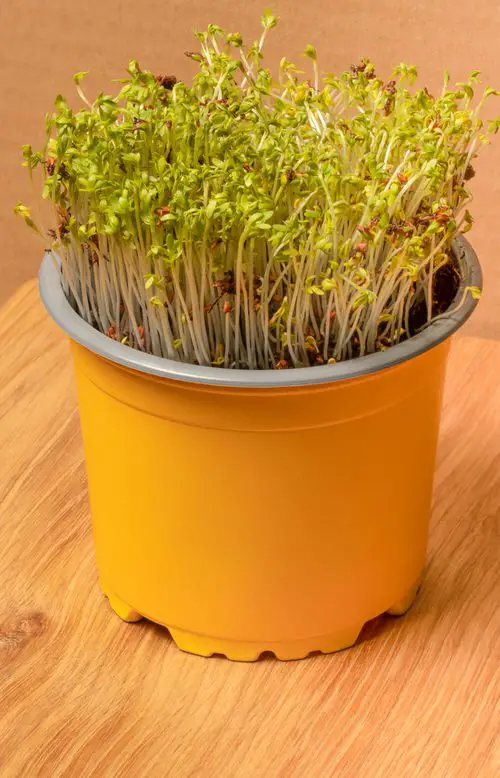
Botanical Name: Lepidium sativum
Packed with a peppery punch, Cress are among the easiest microgreens to grow and add a burst of spicy flavor to dishes. Their tender leaves are perfect for garnishing soups.
8. Fenugreek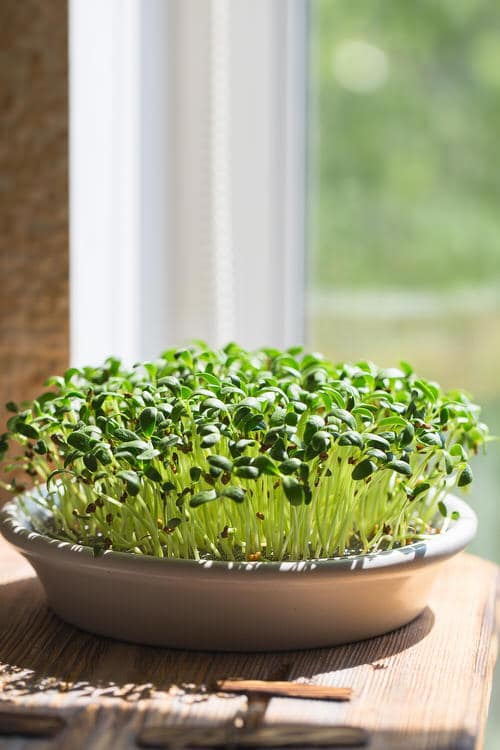
Botanical Name: Trigonella foenum-graecum
With a unique taste that combines bitterness and sweetness, fenugreek microgreens bring a distinct flavor profile to Indian and Middle Eastern cuisine.
9. Asian Greens
Botanical Name: Brassica rapa
Asian greens microgreens encompass a variety of greens like bok choy, tatsoi, and mizuna, offering a range of textures and flavors.
10. Spinach
Botanical Name: Spinacia oleracea
Nutrient-packed and earthy, spinach microgreens deliver a concentrated dose of vitamins and minerals. Their tender leaves can be enjoyed in salads.
11. Kale
Botanical Name: Brassica oleracea var. acephala
Kale microgreens offer a slightly bitter and earthy taste, along with a substantial nutritional profile. They are the fastest growing microgreens and can grow in 7-12 days.
12. Mustard
Botanical Name: Brassica juncea
Mustard microgreens pack a punch of flavor with a hint of horseradish, making them an excellent garnish among the best microgreens to grow.
13. Rocket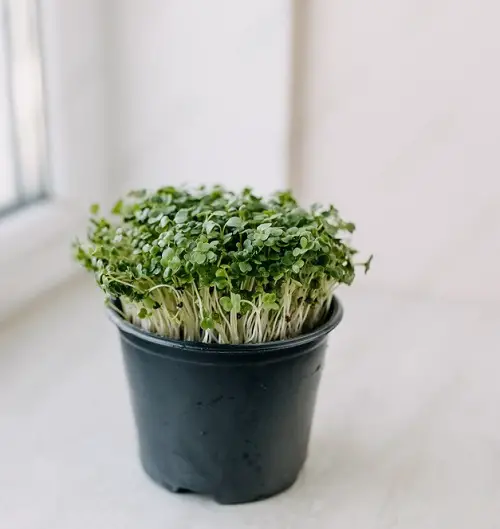
Botanical Name: Eruca sativa
Easy to grow and care for, Rocket microgreens bring a distinct pungent flavor reminiscent of their mature counterpart.
14. Celery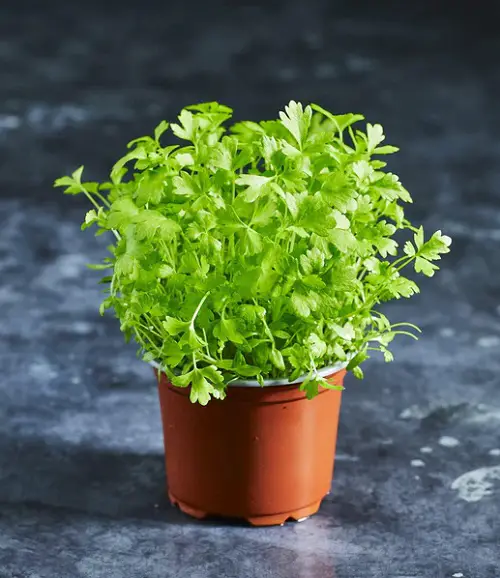
Botanical Name: Apium graveolens
Looking to grow a versatile microgreen? Celery microgreens are your best bet, as they offer a mild flavor with hints of parsley and celery.
15. Chard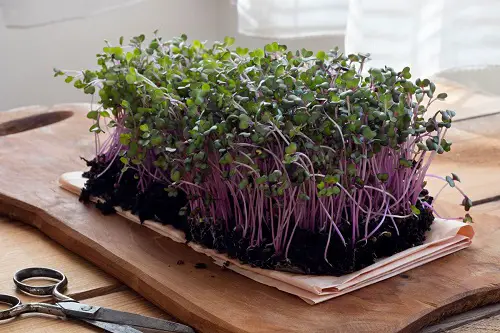
Botanical Name: Beta vulgaris spp. vulgaris
Another of the easiest microgreens to grow, Chard microgreens have a mild and slightly earthy taste, and these are colorful and nutritious.
16. Wasabi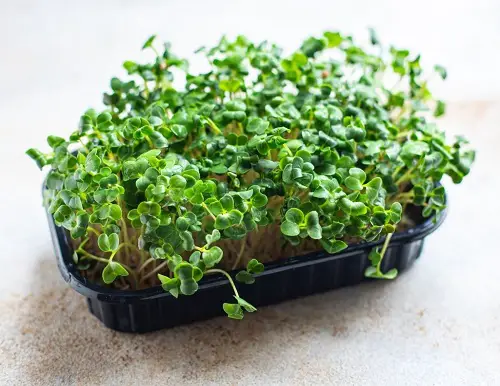
Botanical Name: Wasabia japonica
Intensely spicy with a distinct horseradish-like flavor, Wasabi microgreens bring the fiery kick of wasabi to dishes.
Best Vegetables Microgreens
17. Radish
Botanical Name: Raphanus sativus
Radish microgreens are some of the best microgreens to grow and showcase striking red and green hues. These easy-to-grow greens require regular watering and provide a delightful zing to salads.
18. Carrot
Botanical Name: Daucus carota
Delicate and earthy, Carrot microgreens feature slender green leaves with a subtle carroty taste.
19. Beet
Botanical Name: Beta vulgaris
These low-maintenance greens are packed with nutrients and can add a pop of color and taste to salads, sandwiches, and smoothies.
20. Cabbage
Botanical Name: Brassica oleracea var. capitata
With their compact leaves in shades of green and purple, Cabbage microgreens deliver a mild and slightly sweet flavor.
21. Cauliflower
Botanical Name: Brassica oleracea var. botrytis
Cauliflower microgreens boast delicate white leaves that add an elegant touch to any dish. Sprinkle them on salads and soups, or use them as a flavorful addition to vegetable medleys.
22. Broccoli
Botanical Name: Brassica oleracea var. italica
Packed with nutrients, Broccoli microgreens are the fastest growing microgreens and feature small, tender leaves with a mild taste matching their normal-sized counterparts.
23. Turnip
Botanical Name: Brassica rapa var. rapa
Looking for the best microgreens to grow? With their vibrant green leaves and spicy undertones, Turnip microgreens provide a peppery kick.
24. Peas
Botanical Name: Pisum sativum
These versatile greens are perfect for enhancing salads, adding a touch of freshness to pasta, or as a vibrant topping for soups.
25. Cucumber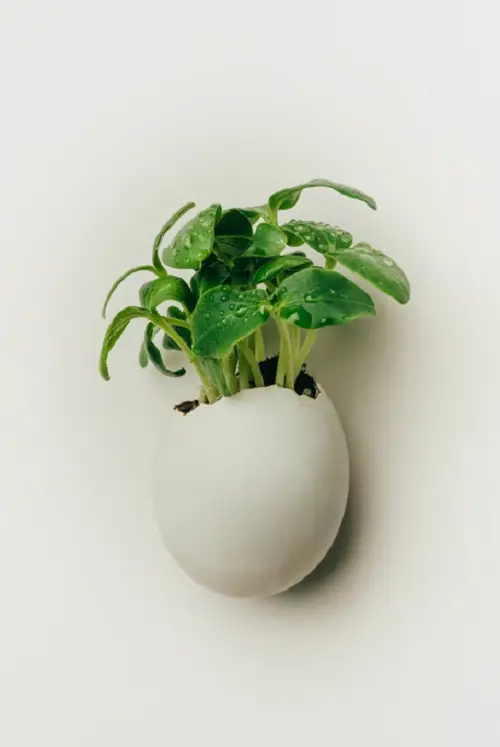
Botanical Name: Cucumis sativus
The vibrant green color and cooling taste of Cucumber microgreens make them a delightful addition to salads, sandwiches, and wraps, providing a burst of freshness in every bite.
26. Fava Bean
Botanical Name: Vicia faba
With their broad and velvety leaves, fava bean microgreens offer a distinctive nutty flavor.
Edible Flowers and Other Best Microgreens to Grow
27. Sunflower
Botanical Name: Helianthus annuus
Sunflower microgreens have vibrant green leaves and are known for their nutty and crunchy texture, adding a delightfully earthy flavor to dishes.
28. Nasturtium
Botanical Name: Tropaeolum majus
Nasturtium microgreens feature beautiful round leaves with vibrant colors, offering a peppery and slightly tangy taste.
29. Pansy 
Botanical Name: Viola tricolor
Pansy microgreens showcase delicate and colorful petals, providing a mild, floral taste that brings a touch of elegance and visual appeal to any plate.
30. Wheatgrass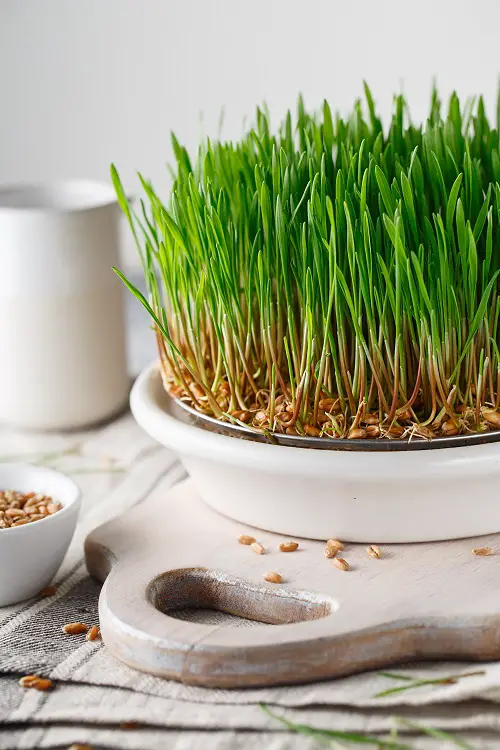
Botanical Name: Triticum aestivum
Wheatgrass microgreens are slender and grass-like with a rich green hue, offering a slightly sweet and earthy flavor.
31. Buckwheat 
Botanical Name: Fagopyrum esculentum
Buckwheat microgreens have heart-shaped leaves and a fresh green color, offering a mild, nutty taste that pairs well with a variety of dishes.
32. Chia
Botanical Name: Salvia hispanica
Chia microgreens have small, tender leaves and a mild, slightly nutty flavor, providing a nutritious boost and a delightful crunchy texture.
33. Flaxseed
Botanical Name: Linum usitatissimum
Flaxseed microgreens feature delicate green leaves and a subtly nutty flavor, adding a healthy dose of omega-3 fatty acids to dishes.
34. Clover
Botanical Name: Trifolium
Clover microgreens exhibit small and delicate leaves with a vibrant green color, offering a mild and slightly sweet taste.
35. Chickpeas
Botanical Name: Cicer arietinum
Chickpea microgreens have tender green leaves with a mild, earthy flavor reminiscent of fresh peas, making them a versatile addition to any plate.
Here are the Best Microgreen Growing Hacks & Cheat Sheet For Every Gardener
Propagating Microgreens
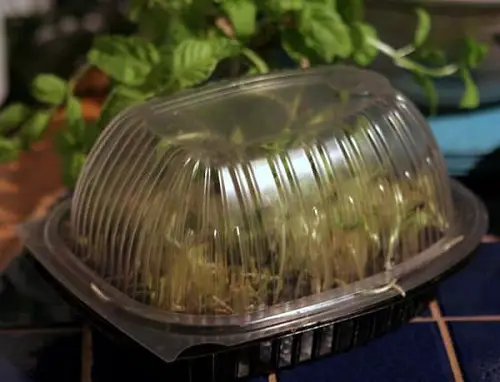
Microgreens are typically grown from seeds rather than cuttings. While it is possible to regrow some leafy greens like lettuce or herbs from cuttings, microgreens are generally not propagated in the same way.
Wondering how to grow microgreens from seeds? Don’t know how to grow microgreens in trays? Follow these steps to learn the best way to grow microgreens:
- Select microgreen varieties based on your preferences and desired flavors. You should choose shallow trays or containers with drainage holes for growing microgreens.
- Fill the containers with a lightweight and well-draining soil mix, avoiding heavy garden soil.
- Evenly spread the microgreen seeds over the soil surface, ensuring a dense but not overcrowded arrangement.
- Gently press the seeds into the soil or use a small tamper for good seed-to-soil contact.
- Moisten the soil using a spray bottle or a watering can with a fine nozzle, ensuring even moisture without overwatering.
- Place the trays in a well-lit location with direct or indirect sunlight or use artificial grow lights positioned 4-6 inches above the trays.
- Maintain a temperature range of 60-75°F (15-24°C) and a humidity level of 40-60%.
- Regularly check the moisture level of the soil and water gently as needed to keep it consistently moist.
- Harvest the microgreens when they have developed their first set of true leaves and reached the desired height (around 1-3 inches).
- Use clean scissors or a sharp knife to cut the microgreens just above the soil level.
- Rinse the harvested microgreens under cool water, pat them dry, and store them in airtight containers or ziplock bags lined with paper towels in the refrigerator.
Check out these Simple Seed Germination Tips To Grow Every Seed
Requirements for Growing Microgreens
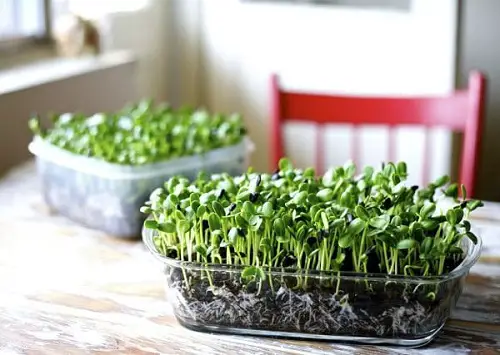
Sunlight
Place your microgreens in a spot that receives ample sunlight. Ideally, they should be exposed to about 4-6 hours of direct or indirect sunlight each day.
A sunny windowsill or a location near a bright, south-facing window works well. If sunlight is limited, you can also use the best grow lights for microgreens.
Soil
Know how to grow microgreens but don’t know the perfect soil? Choose a lightweight and well-draining soil mix for your microgreens. Avoid heavy garden soil, as it can lead to poor drainage and hinder their growth.
Learn some Great Tips to Rejuvenate Your Old Soil here
A popular option is a soilless mix made of coco coir, peat moss, or vermiculite. These mixes provide good aeration and moisture retention, allowing the microgreens’ roots to thrive.
Watering
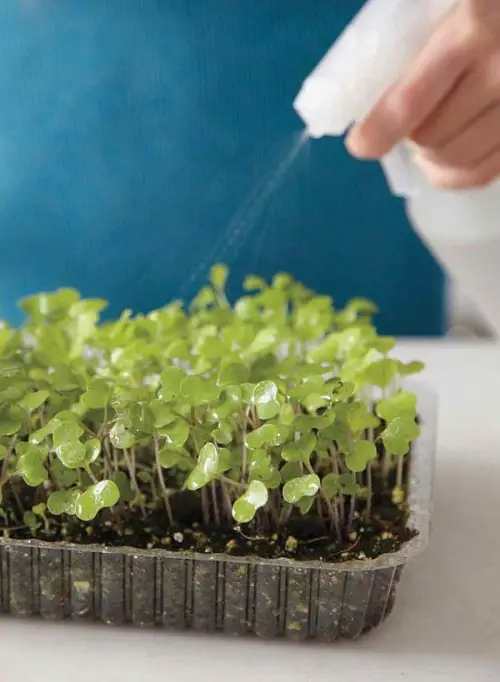
Water from the bottom carefully so as not to disturb or uproot the tender plants. To maintain the moisture, water regularly. You can use a sprayer or mist water using your hands lightly.
Here are the best ways to water plants
Keep the soil consistently moist but not waterlogged. Avoid overwatering, as excessive moisture can cause rot or mold. Aim to keep the soil evenly moist throughout the growing process.
Temperature and Humidity
Microgreens generally prefer moderate temperatures between 60-75°F (15-24°C). Ensure the growing environment is well-ventilated and free from extreme temperature fluctuations.
Wondering how to grow microgreens indoors? Aim for a humidity level of around 40-60% to promote healthy growth. You can increase humidity by lightly misting the plants or placing a tray filled with water near them.
Here are 10 Ways To Increase Humidity For Houseplants That Work
Caring for Microgreens
Fertilizer
Microgreens do not require much fertilizer because their growth cycle is relatively short. However, if you want to provide an extra boost, you can use a diluted organic liquid fertilizer or a balanced, water-soluble fertilizer.
Check out this Dried Banana Peel Powder Fertilizer at Home for Any Plant
Apply the fertilizer sparingly, following the manufacturer’s instructions, to avoid overfeeding the plants. Remember that microgreens are often harvested at an early stage, so it’s important to use fertilizers that are safe for consumption.
Pests and Diseases
Microgreens are generally less susceptible to pests and diseases compared to mature plants. However, they can still encounter some common issues. To prevent pest problems, ensure good airflow around the plants and keep the growing area clean.
Here are Types of Common Pests in Your Garden & How to Get Rid of Them
If pests like aphids or fungus gnats appear, you can use organic insecticidal soap or neem oil as a natural remedy. For diseases such as damping-off (a fungal disease), it’s crucial to provide proper ventilation, avoid overwatering, and use sterile soil to prevent contamination.
Harvesting Microgreens

Wondering how long do microgreens take to grow? Microgreens typically take around 1 to 3 weeks to grow from seed to harvest, depending on the specific variety.
Growing microgreens is an easy task, and once they’re ready, you can harvest them and reap your rewards.
- Microgreens are typically ready for harvest when they have developed their first set of true leaves, around 1-3 inches in height.
- Use clean scissors or a sharp knife to cut microgreens just above the soil level, avoiding pulling or yanking them out.
- Harvest microgreens when they have reached the desired flavor and appearance based on personal preference and the specific variety.
- You should harvest individual plants as they reach the desired stage if growing different varieties in the same tray.
- Make sure that you harvest the entire tray at once by cutting all the microgreens if growing a single variety.
- Rinse harvested microgreens under cool water, pat them dry, and avoid storing them wet to prevent spoilage.
- Store harvested microgreens in airtight containers or ziplock bags lined with paper towels in the refrigerator.
- You should use microgreens immediately for the freshest taste or consume them within a few days of harvest.
Here are 16 Easy Indoor Microgreen Garden Ideas
Frequently Asked Questions
1. How to Grow Microgreens in a Jar?
To start growing microgreens in a jar, soak the seeds in water for a few hours. Drain the water and spread a thin layer of moist soil or a paper towel at the bottom of the jar. Sprinkle the soaked microgreen seeds evenly on top, mist them with water, and cover the jar with a breathable lid or a piece of cheesecloth. Place the jar in a well-lit area and water lightly every day. Harvest the microgreens when they reach the desired height.
2. Growing Microgreens on Paper Towels?
To grow microgreens on paper towels, moisten the towels and place them on a tray or shallow container. Sprinkle the seeds evenly on the moist towels, mist them with water, and cover with another moistened paper towel. Keep the tray in a well-lit area, and mist the towels regularly to maintain moisture. Once the microgreens have reached the desired height, gently lift them from the paper towels for harvesting.
3. How to Grow Microgreens Hydroponically?
For hydroponic microgreen growing, prepare a shallow tray or container with drainage holes. Fill the tray with a hydroponic medium such as perlite or vermiculite. After soaking the seeds, distribute them evenly on the medium. Provide all the proper growth and care, and harvest your microgreens once they’re mature.



Your blog is very informative on growing microgreens. Thank you for sharing.
Great article! I’ve always been interested in growing my own microgreens, but wasn’t sure where to start. This article provides a comprehensive guide on everything you need to know to grow microgreens, from choosing the right seeds to caring for them during their growth.
his is such a fantastic guide! Growing microgreens at home is not only easy but also a great way to add fresh flavors and nutrients to meals. Love the variety of options listed—especially basil, kale, and cilantro! Can’t wait to try growing some on my windowsill. Thanks for sharing!